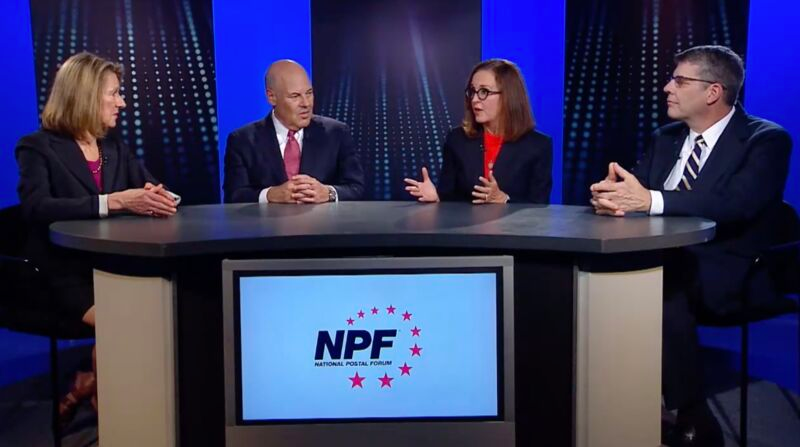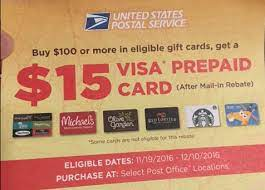USPS Appropriations Bill: 2nd PRC Review
The Senate Appropriations Committee should soon take up the annual appropriation for the Postal Service. We have heard of interest among some members of the committee to include language to require the Postal Regulatory Commission to perform a quick second review of USPS rate regulation.
The Alliance of Nonprofit Mailers has been reaching out to key members of the committee to encourage a second review. We have had meetings in which our members described the severe impact of the new USPS rates on nonprofit mailers and the urgent need for another review.
A further review is necessary because the PRC cut off the first review just as the pandemic began. Since then, a lot has changed. This includes USPS finances that have benefited from a $10 billion grant by Congress and tremendous growth in package revenue. Once Congress enacts its Postal Reform Act, $44 billion in liabilities will be removed from the USPS’s balance sheet. Already, USPS financial results for FY 2021 are $5 billion better than the agency’s ten-year plan predicted.
If USPS accountants included the $10 billion grant from Congress in income, USPS FY 2021 results would be $15 billion better than the “Delivering for America” plan projected.
The draft legislative language under consideration is clear:
-
- For payment to the Postal Service Fund for revenue forgone on free and reduced rate mail, pursuant to subsections (c) and (d) of section 2401 of title 39, United States Code, $56,711,000 (reduced by $1,000,000) (increased by $1,000,000) (reduced by $1,000,000) (increased by $1,000,000): . . . Provided further that, notwithstanding any prior order of the Postal Regulatory Commission under section 3622(d)(3) of title 39, United States Code, the Commission shall review the system for regulating rates and classes for market-dominant products as set forth in section 3622(d)(3), expressly including all changes to Postal Service finances, volume and revenues taking place, and any Act of Congress affecting such finances, volume and revenues enacted after February 29, 2020. The Commission shall commence and complete this review within 270 days of enactment of this legislation. The rates for market-dominant products shall not be adjusted during the Commission’s review under this subsection.
Right now, nonprofit mailers can assist with advancing legislation to curb postage increases. The more Congress hears about troubling aspects of the USPS’s plan, the more likely it is to push hard for changes with the Postmaster General and the Board of Governors.
Please consider taking a few minutes to fill out a short form on this page, which will automatically message your members of Congress. Or you can text MAIL to 52886. The process is a simple, effective, and efficient way to let Congress know your thoughts and tell your story about how important an affordable USPS is to your nonprofit organization.
[While the Alliance of Nonprofit Mailers is not a member of the Coalition for a 21st Century Postal Service, we appreciate and support their efforts on the second PRC review.]
USPS Cuts Off Customer Lines of Communication
The Postmaster General’s Mailers Technical Advisory Committee (MTAC) boasts the following Purpose in its official Charter:
PURPOSE
The Postmaster General’s Mailers’Technical Advisory Committee (MTAC) is a venue for the United States Postal Service (“Postal Service”) to share technical information with mailers, and to receive their advice and recommendations on matters concerning mail-related products and services, in order to enhance customer value and expand the use of these products and services for the mutual benefit of Mailing Industry stakeholders and the Postal Service.
Equally important, MTAC was formed by postal management to work things out with its major customers and mail service providers before they felt it necessary to turn to Congress or other venues to solve postal problems. Over the past 60 years or so, it mostly fulfilled that purpose. MTAC did so by hosting quarterly in-person, interactive, give and take meetings at postal headquarters, interspersed with many committee and workgroup meet-ups in between, mostly by teleconference.
The one thing every MTAC element included was two-way communication between the postal agency employees, and the private-sector users of mail that they served. That was MTAC’s main strength.
The other main venue for customers to interact with USPS management has been the National Postal Forum. Indeed, the very mission of the NPF stresses relationship-building:
OUR MISSION — To assist the United States Postal Service in building relationships with mailers and educating them in the most effective and efficient use of the products and services offered by the United States Postal Service.
Both MTAC and the NPF have been converted to virtual events during the last two years. While virtual is necessitated by the Covid pandemic, the Postal Service has chosen to not use the interactive capabilities of online platforms like Zoom that we all have become so familiar with. NPF and MTAC are probably the only, or at least the very few, virtual meetings we all have experienced without two-way communications.
The two primary relationship-builders historically used by USPS have been turned into one-way propaganda machines akin to the state news outlets in totalitarian regimes. The recent NPF consisted of postal managers sitting at a desk talking to each other about how great their Delivering for America Plan is.
 Judy De Torok, Vice President, Corporate Affairs; Louis DeJoy, Postmaster General and Chief Executive Officer; Jacqueline Krage Strako, Chief Commerce and Business Solutions Officer and Executive Vice President; and Steven W. Monteith, Chief Customer and Marketing Officer (CCMO) and Executive Vice President
Judy De Torok, Vice President, Corporate Affairs; Louis DeJoy, Postmaster General and Chief Executive Officer; Jacqueline Krage Strako, Chief Commerce and Business Solutions Officer and Executive Vice President; and Steven W. Monteith, Chief Customer and Marketing Officer (CCMO) and Executive Vice President
MTAC meetings are also one-way with postal managers droning on as PowerPoint slides flash across the screen. No questions or comments are allowed.
We suggest that USPS leaders bring back interactive meetings with mailers and mail service providers as soon as possible. The current format is not serving well the purpose and mission of the MTAC and NPF, nor the mission of the agency established by Congress in Title 39:
The United States Postal Service shall be operated as a basic and fundamental service provided to the people by the Government of the United States, authorized by the Constitution, created by Act of Congress, and supported by the people. The Postal Service shall have as its basic function the obligation to provide postal services to bind the Nation together through the personal, educational, literary, and business correspondence of the people. It shall provide prompt, reliable, and efficient services to patrons in all areas and shall render postal services to all communities. The costs of establishing and maintaining the Postal Service shall not be apportioned to impair the overall value of such service to the people.
Small USPS Test Interpreted as Postal Banking
Postal managers must have been happy that this month a very small test was interpreted as “postal banking” and given much attention by the media. Happy in hopes that it would divert attention from the other big story of the mail slowdown instituted October 1. And happy to perhaps slightly neutralize the pro-postal banking progressives who have been attacking the ten-year plan of Postmaster General Louis DeJoy.
The pilot launched on September 13 in only four locations: Washington, D.C.; Falls Church, Virginia; Baltimore; and the Bronx, New York.
Customers can bring a business or payroll check into a post office and buy a gift card for up to $500 for a flat fee of $5.95. USPS has been selling gift cards for $5.95 for several years. So, the supposed pilot test of “postal banking” really is just adding new payment options, business or payroll checks, for an existing product, gift cards. And the check must be for no more than $500.
A 2016 USPS promotion of gift cards.
Why do it this way? To avoid the regulatory hurdles for market tests of experimental products. In Title 39 Section 3641, Congress erected numerous hurdles and barriers to the testing of new products by the postal agency.
The banking and financial services industry need have no fear that full-blown postal banking will be anything but a Sisyphean task. In other words, true postal banking is very unlikely to happen. And if anything resembling postal banking does break through the barriers, it will be very limited and not profitable.
Alliance Notes
- October 1, 2021 – The Washington Post – USPS is about to charge you more for slower mail. Here’s why.
- October 4, 2021 – The American Prospect – USPS Begins Postal Banking Pilot Program
- October 4, 2021 – NBC News – Can a post office be a bank? New services test a progressive priority
- October 4, 2021 – ABA Banking Journal – S. Postal Service Launches Financial Services Pilot Program in Select Cities
- October 4, 2021 – American Banker – The Postal Service’s tiny check-cashing test sparks a big reaction
- October 4, 2021 – Business Insider – Yes, your mail is getting slower, America. The postmaster general’s changes at the US Postal Service are causing longer delivery times.
- October 5, 2021 – The Daily Progress – “It’s just inexcusable:” Sen. Warner says he’ll keep pressuring USPS
- October 6, 2021 – Payments Journal – S. Postal Service Check Cashing is More Political than Practical
- October 6, 2021 – MSN Money – Alabama Power recommends paying bills online due to USPS delays
- October 7, 2021 – Reuters – 19 U.S. states seek to block postal service cutbacks
- October 8, 2021 – Federal News Network – Attorneys general urge USPS regulator to review entire 10-year reform plan
- October 9, 2021 – Linn’s Stamp News – PRC again questions USPS mail delivery plan
- October 12, 2021 – Federal News Network – USPS employee satisfaction falls behind competitors, IG analysis finds
- October 13, 2021 – Linn’s Stamp News – Interest groups urge Biden not to reappoint Bloom to second term on USPS board of governors
- October 14, 2021 – Government Executive – Lawmakers, Stakeholders Push New Strategies to Reverse Mail Slowdowns and Price Hikes
- October 15, 2021 – Government Executive – Postal Service Blames ‘Street Crime’ and Absenteeism for Mail Delays


Leave a Reply